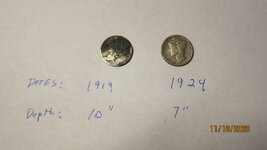fastdraw
Well-known member
After my last post, it kind of got me wondering. Is there anybody out there that has a good knowledge of Metallurgy or geology that could answer this question. About 85% of all of the copper or silver coins I have ever pulled out of the ground don't look very pretty. Now I'm talking about real old copper coins and real old silver coins, or old Nickel coins. NOT the modern clad stuff. But once in a while... I see people on this form, posting coins that are well over a hundred years old and they look really really great..! I've posted a couple myself. Why why why..? I've seen others post coins that shouldn't be in the condition that they are since they've been in the ground for maybe a hundred years. I wonder if coins frozen in Alaska look better...?



